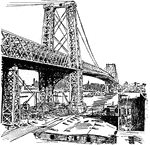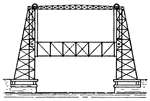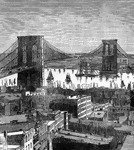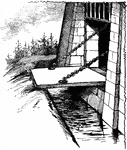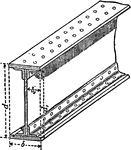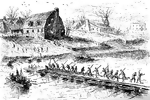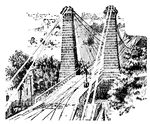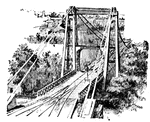The Bridges ClipArt gallery offers 141 images of numerous styles of bridges, including structural and integrity views, and images of famous bridges.

Rialto Bridge
"The bridge of the Rialto at Venice was begun in 1588, Antonio da Ponte being the architect. The span…

Saintes Bridge
"The old bridge at Saintes as M. Violletle-Duc considers that it appeared towards the end of the 14th…
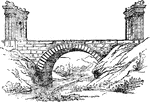
St. Chamas Bridge
"One of the earliest examples of the castle built to protect the bridge against an enemy or to enforce…
Suspension Bridge
A suspension bridge is a type of bridge where the main load-bearing elements are hung from suspension…

Ticino Bridge
"The covered bridge over the Ticino at Pavia was erected, under Gain Galeazzo Visconti, about the end…
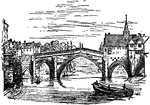
York Bridge
"A fine bridge over the Ouse at York, erected in the reign of Queen Elizabeth, was taken down some years…
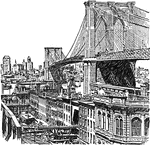
Brooklyn Bridge
The Brooklyn Bridge, the largest suspension bridge in the world at the time of its completion.
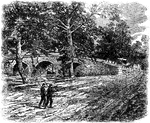
Burnside's Bridge
Burnside's Bridge is a landmark on the Antietam National Battlefield near Sharpsburg, Maryland. During…

Caesar's Bridge Over the Rhine
A bridge built by Julius Caesar and his legionaries to aid in crossing the Rhine River. They are considered…

Cantilever
A cantilever bridge is a bridge built using cantilevers: structures that project horizontally into space,…

Cantilever
Construction of a cantilever bridge. A cantilever bridge is a bridge built using cantilevers: structures…

Cantilever
Construction of a cantilever bridge. A cantilever bridge is a bridge built using cantilevers: structures…
Cantilever Bridge
This is a bridge that uses structures that project horizontally with support on only one end.

Edward's Ferry
"Successful retreat of the Federal troops from the Virginia shore across a canal-boat bridge at Edward's…

Railroad at Grafton
"View of Grafton, West Virginia, occupied by the Federal Troops, under the command of General McClellan,…

Great Bridge at McConkey's Ferry
The Great Bridge over the Charles River connected Cambridge, Massachusetts to Little Cambridge, which…
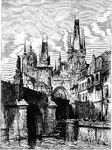
Karlsbrücke Bridge in Prague
An historic bridge in Prague, the Karlsbrücke - is a major site in Prague. Since 1402, it is a famous…

King's Bridge
"View at King's Bridge. This view is from the southwest side of the stream, from near the tide-mill.…

King's Bridge in 1860
The King's Bridge, erected in 1693 by Frederick Philipse a local Lord loyal to the British Monarch.…
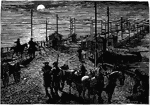
Soldiers Guarding Long Bridge
An illustration of soldiers guarding Long Bridge in Arlington, Virginia.
Niagra Bridge
Part of Niagra Suspension Bridge. This view, looking up from the river, comprises about one half the…
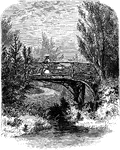
Lafayette Park
An view of Lafayette Park in St. Louis, Missouri. A woman walking across a small wooden bridge over…

Cross Section of Concrete Pier for Railway bridge
An illustration of a cross section of a concrete pier for a railway bridge with dimensions labeled.…

Pons Aelius
"A bridge. As the rivers of Greece were small, and the use of the arch known to them only to a limited…
Pons Ariminum
"A bridge. As the rivers of Greece were small, and the use of the arch known to them only to a limited…
Pons Cestius
"A bridge. As the rivers of Greece were small, and the use of the arch known to them only to a limited…
Pons Trajan
"A bridge. As the rivers of Greece were small, and the use of the arch known to them only to a limited…
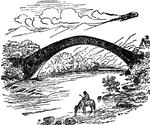
Pont-y-tu-Prydd
"The Pont-y-ru-Prydd goes over the River Taff near Newbridge. The arch measures 140 feet between the…

